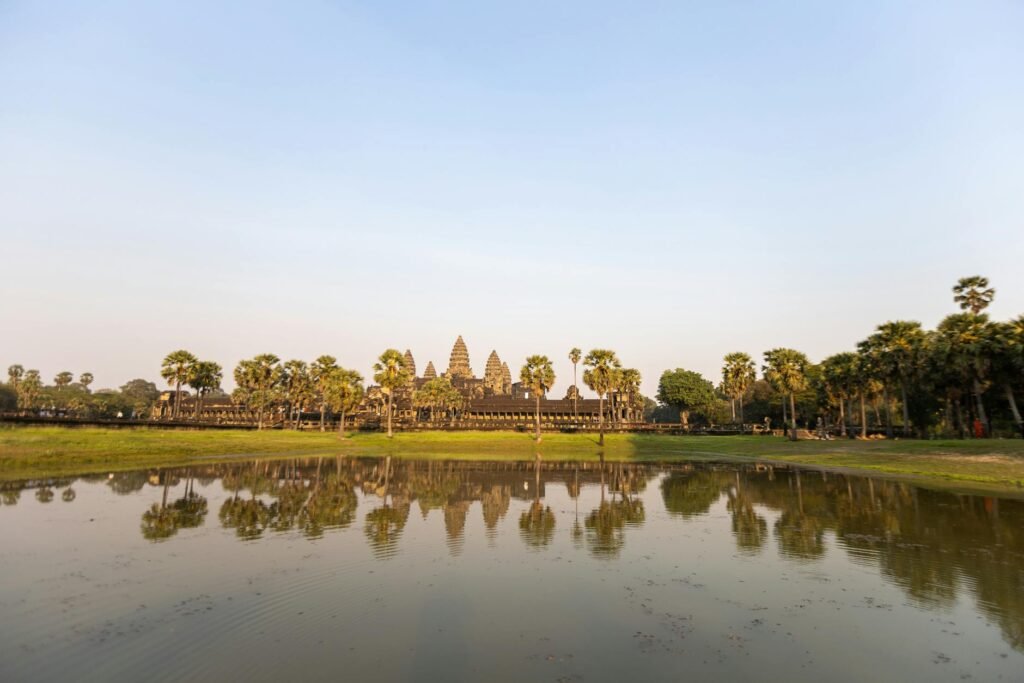Embark on an unforgettable photographic journey through the majestic Angkor Wat temple complex in Cambodia! This blog post will guide you through the best spots, times, and techniques for capturing stunning images of this architectural marvel. Whether you’re a seasoned professional or a passionate amateur, get ready to elevate your photography skills amidst the breathtaking beauty of Angkor.
Sunrise over Angkor Wat
Witnessing the sunrise over Angkor Wat is an experience unlike any other. Arrive early – very early – to secure the best vantage points and capture the temple bathed in the golden hues of the morning light. Consider exploring the surrounding reflecting pools for unique compositional opportunities. 
Exploring the Intricate Details
Angkor Wat is a treasure trove of intricate carvings and architectural details. Take your time to explore the various levels of the temple, focusing on smaller elements that often get overlooked. A macro lens can be incredibly useful here, allowing you to capture the exquisite detail of the bas-reliefs and sculptures. Learn more about the history of the temple to better understand the context of your images. 
Capturing the Atmosphere
Beyond the architectural grandeur, Angkor Wat also possesses a unique atmosphere and energy. Try capturing this by focusing on the interplay of light and shadow, the movements of people within the complex, and the overall ambiance of this sacred place. Experiment with different shooting angles and perspectives to convey this atmosphere effectively. Consider using a wide-angle lens to capture the vastness of the temple. [IMAGE_3_HERE]
Photographing Beyond Angkor Wat
While Angkor Wat is the star of the show, the surrounding Angkor Archaeological Park offers a plethora of other stunning temples and structures to photograph. Explore Ta Prohm, famous for its giant tree roots entwining the ruins, or Bayon, known for its enigmatic smiling faces. Check out our guide to other Angkor temples for inspiration. Remember to check the official website for opening hours and ticket information. [IMAGE_4_HERE]
Post-Processing Your Masterpieces
Once you have captured your stunning images, take the time to properly edit and enhance them. Consider adjusting contrast, saturation, and sharpness to bring out the best in your photos. Numerous software options are available, from Adobe Lightroom to free, user-friendly programs like GIMP. Explore online tutorials for tips and tricks. Remember, post-processing is a crucial step in creating truly memorable photographs. [IMAGE_5_HERE]
Tips for the Perfect Shot
Remember to plan your visit strategically. Consider the time of year and the weather conditions. The best time to visit is generally during the dry season (November to April). Also, don’t forget to wear comfortable shoes, bring plenty of water, and apply sunscreen. For a more in-depth look at planning your visit, consult this helpful resource.
Conclusion
With its awe-inspiring architecture, rich history, and captivating atmosphere, Angkor Wat provides endless photographic opportunities. By carefully planning your visit, employing effective photographic techniques, and dedicating time to post-processing, you can create truly stunning images that capture the magic of this extraordinary place. We hope this guide helps you on your photographic adventure!
Frequently Asked Questions
What is the best time of day to photograph Angkor Wat? Sunrise and sunset offer the most magical light, casting a warm glow over the temples.
What equipment should I bring? A wide-angle lens for capturing the scale of the temple, a telephoto lens for details, and a tripod for sharp images are recommended.
Do I need a special permit to photograph Angkor Wat? No, but be respectful of the site and its visitors.
Are there any restrictions on using drones? Drone usage is generally restricted within the Angkor Archaeological Park. Check the latest regulations before attempting to fly a drone.
How can I learn more about photography techniques? There are many excellent online resources and workshops available, including those specific to architectural and landscape photography.